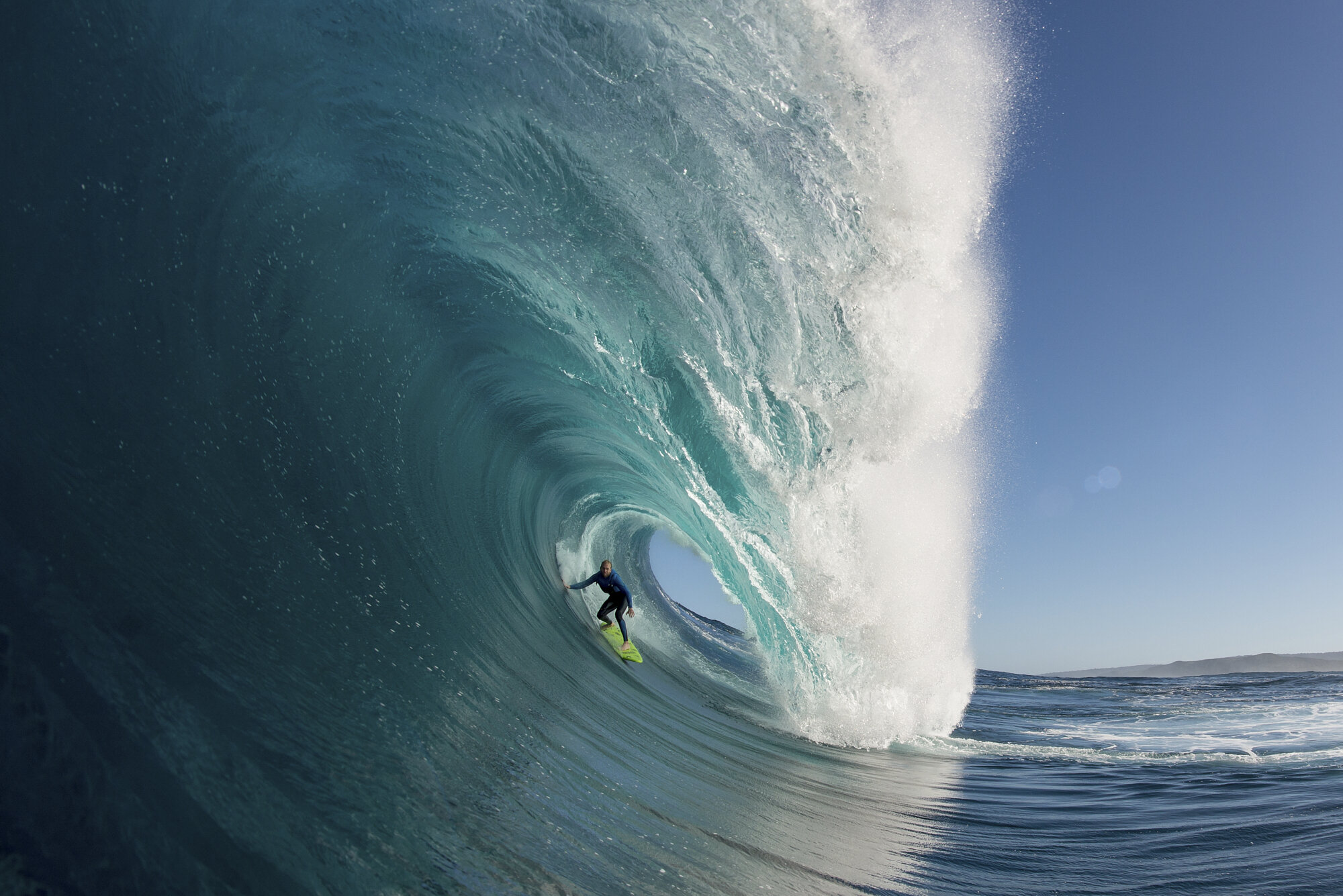A LIFE LESS ORD-INARY
Words: Tim Baker.
Photos: Russell Ord
Photographer Russell Ord has built a life around the ocean and taking extraordinary risks in pursuit of his passion
“You play rugby league your whole life, you get a beating by six-to-eight-foot waves it’s not so bad,” says Russ.
Crawling into the wreckage of a crashed car, looking into the eyes of the young driver as the life drained from her, Russell Ord was struck by a powerful sense of the fragility of our existence.
It was one of a series of brushes with mortality that ultimately led the Margaret River-based surf photographer to leave the security of a regular pay cheque with the fire brigade for the precarious and uncertain returns of freelance photography.
But the risk-taking and confrontations with mortality did not end there. Russ was never going to be content with taking the same surf photos as every other photographer on the beach. His love of the ocean and appetite for intense situations led him to swim into some of the most extreme and dangerous positions to document perilous and unique surfing moments.
Russ’s background in Rugby League and a career in the fire brigade proved the ideal preparation for swimming out in huge seas with a water housing trying to capture the most extreme images.
“You play rugby league your whole life, you get a beating by six-to-eight-foot waves it’s not so bad,” he says. “I just concentrated on being in the water the whole time. I just did it because I enjoyed it.”
Russ had a promising career in rugby league and signed a contract with the Adelaide Rams, before they lost their place in the national competition in 1998 after the Super League debacle, an ill-fated attempted to launch a rival national rugby league competition. He joined the fire brigade at 20 and got into surf photography after a knee injury curtailed his surfing. “I just got some rolls of film and hoped for the best,” he says.
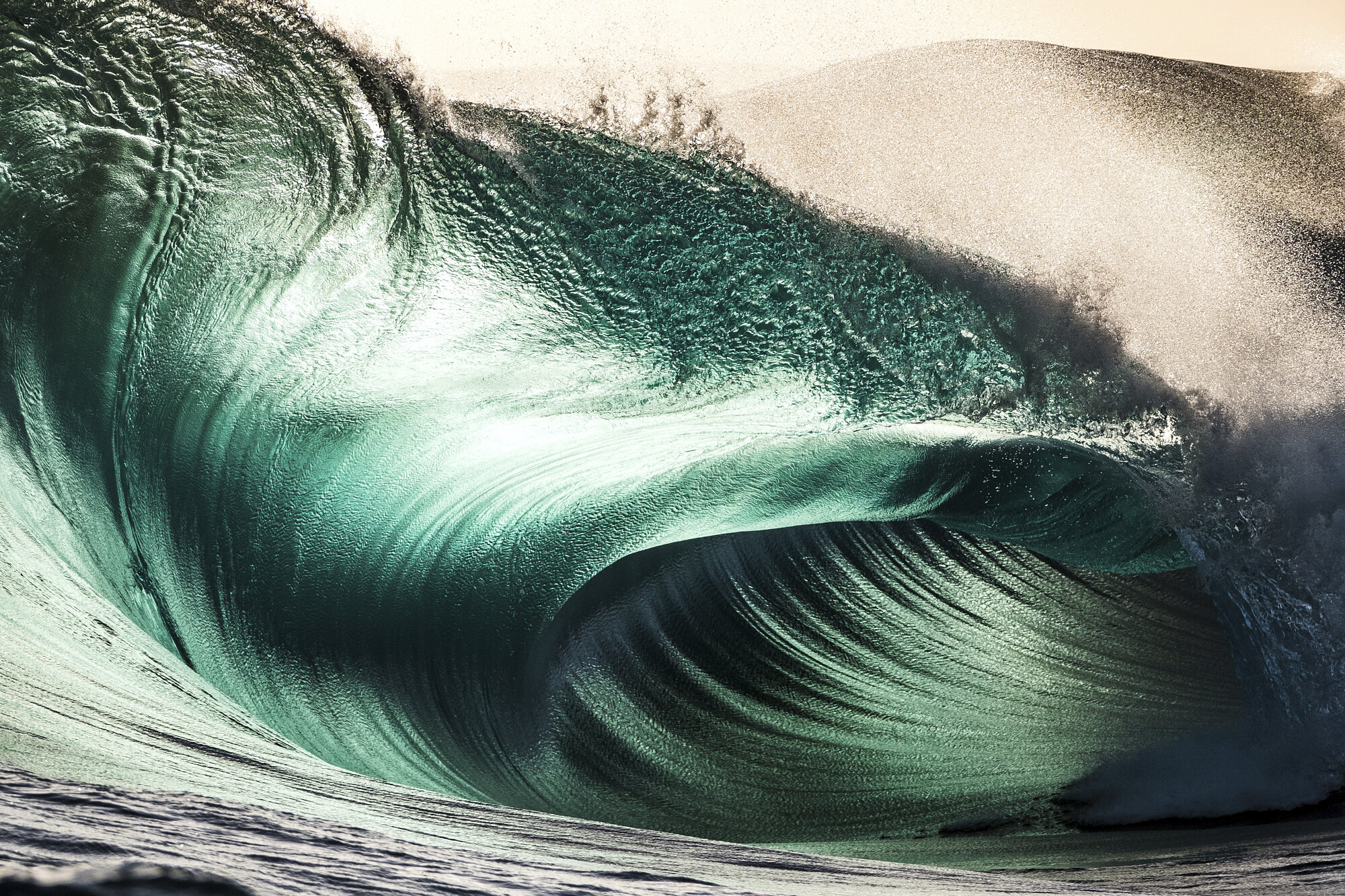
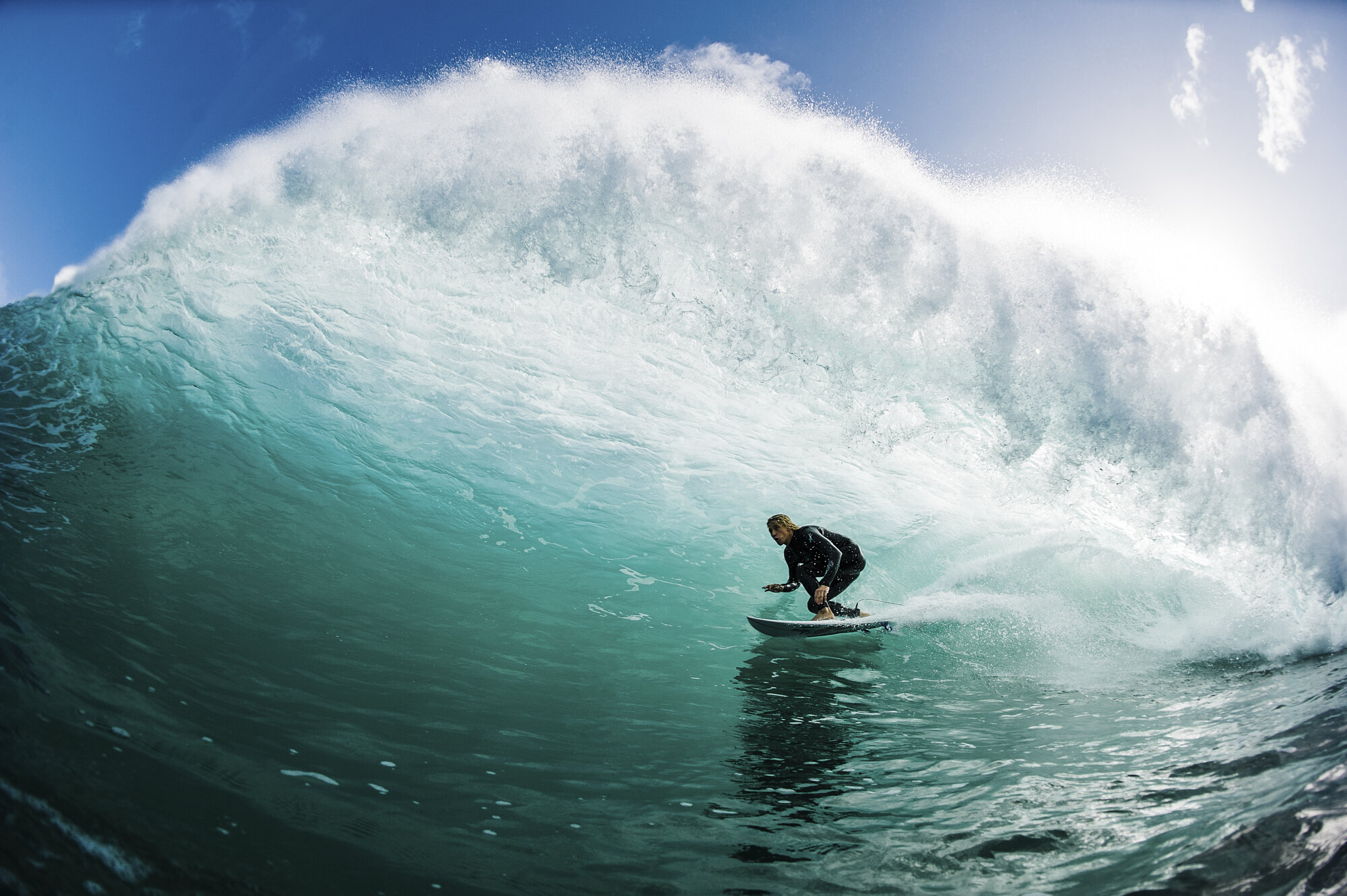
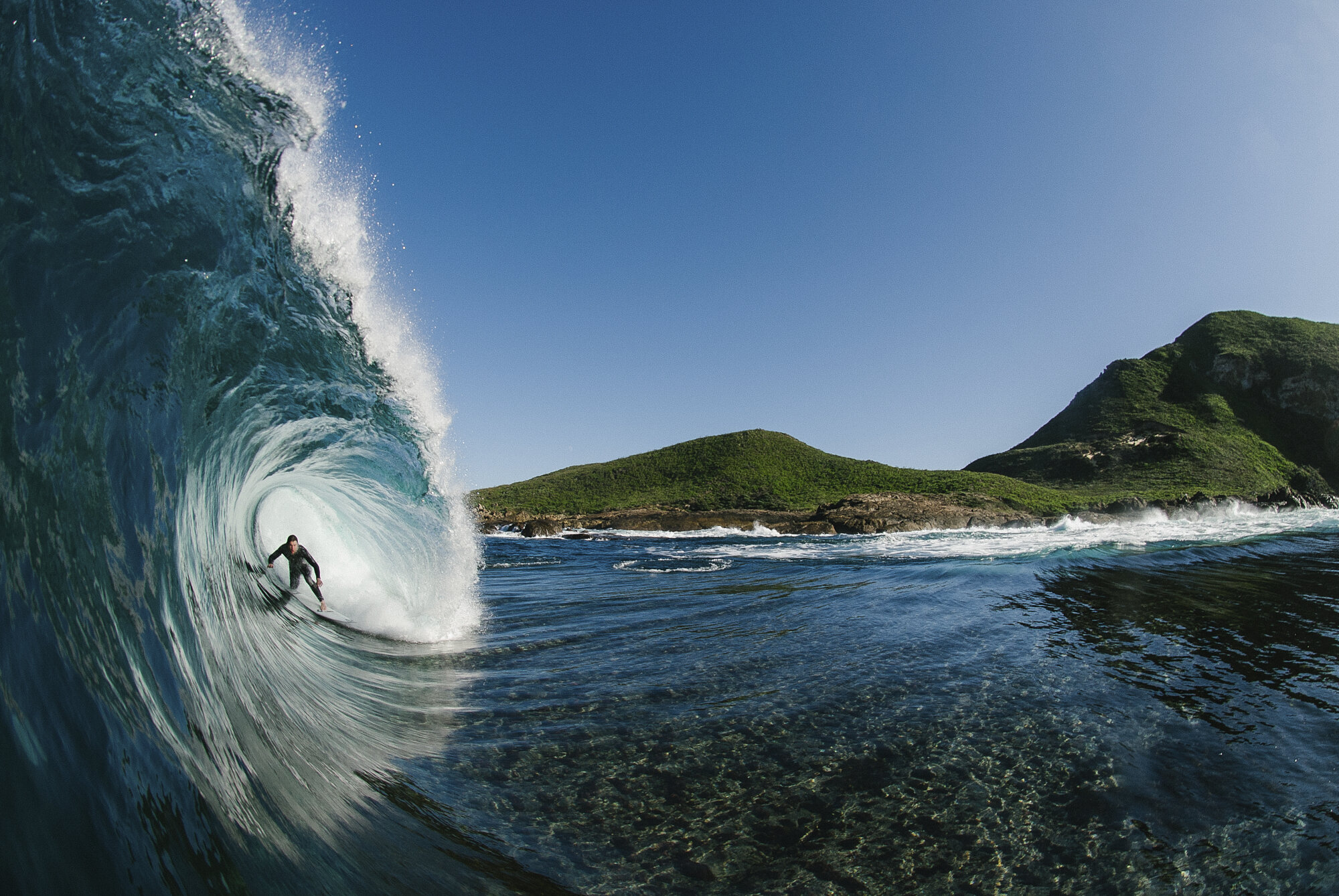
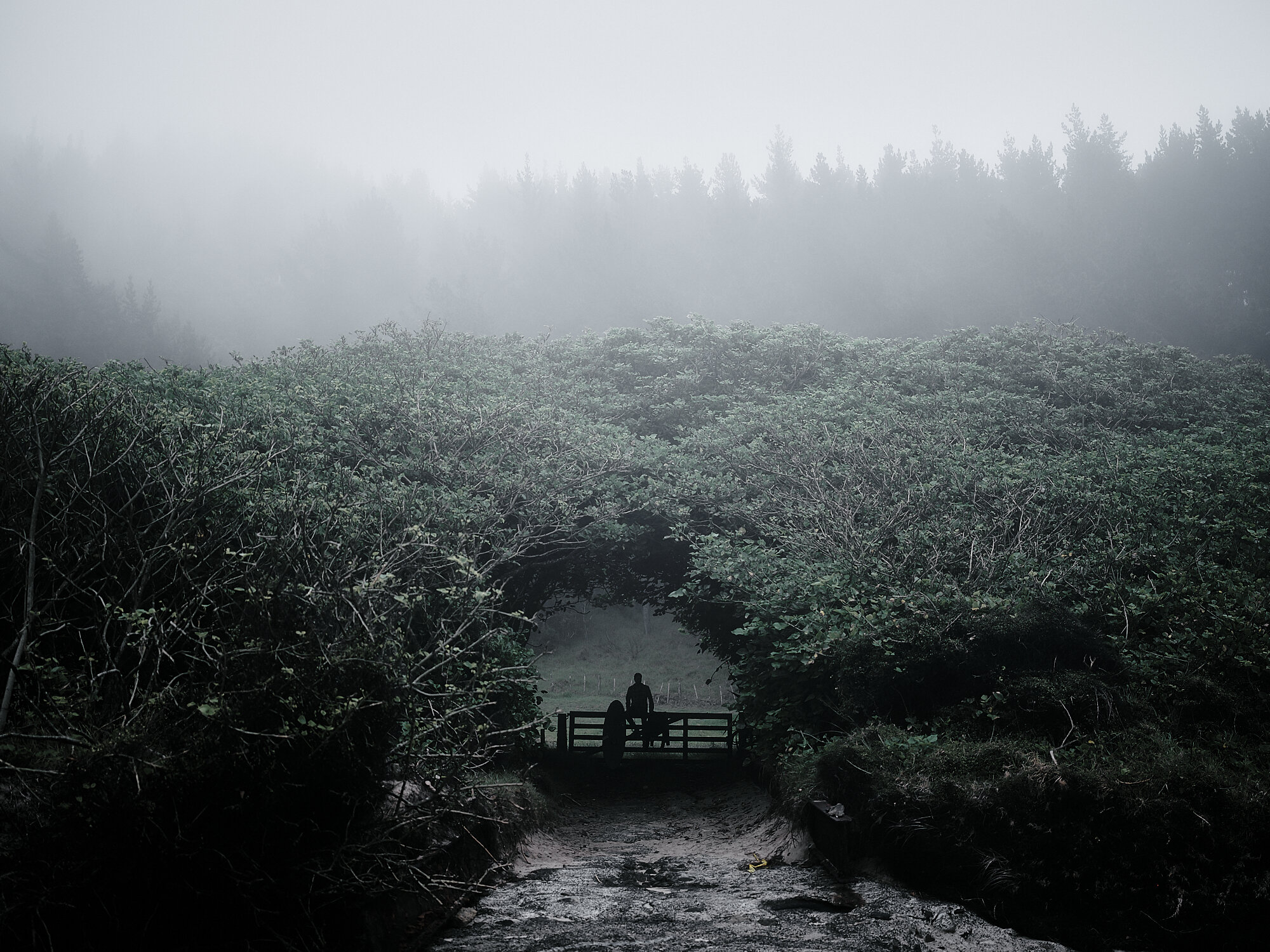
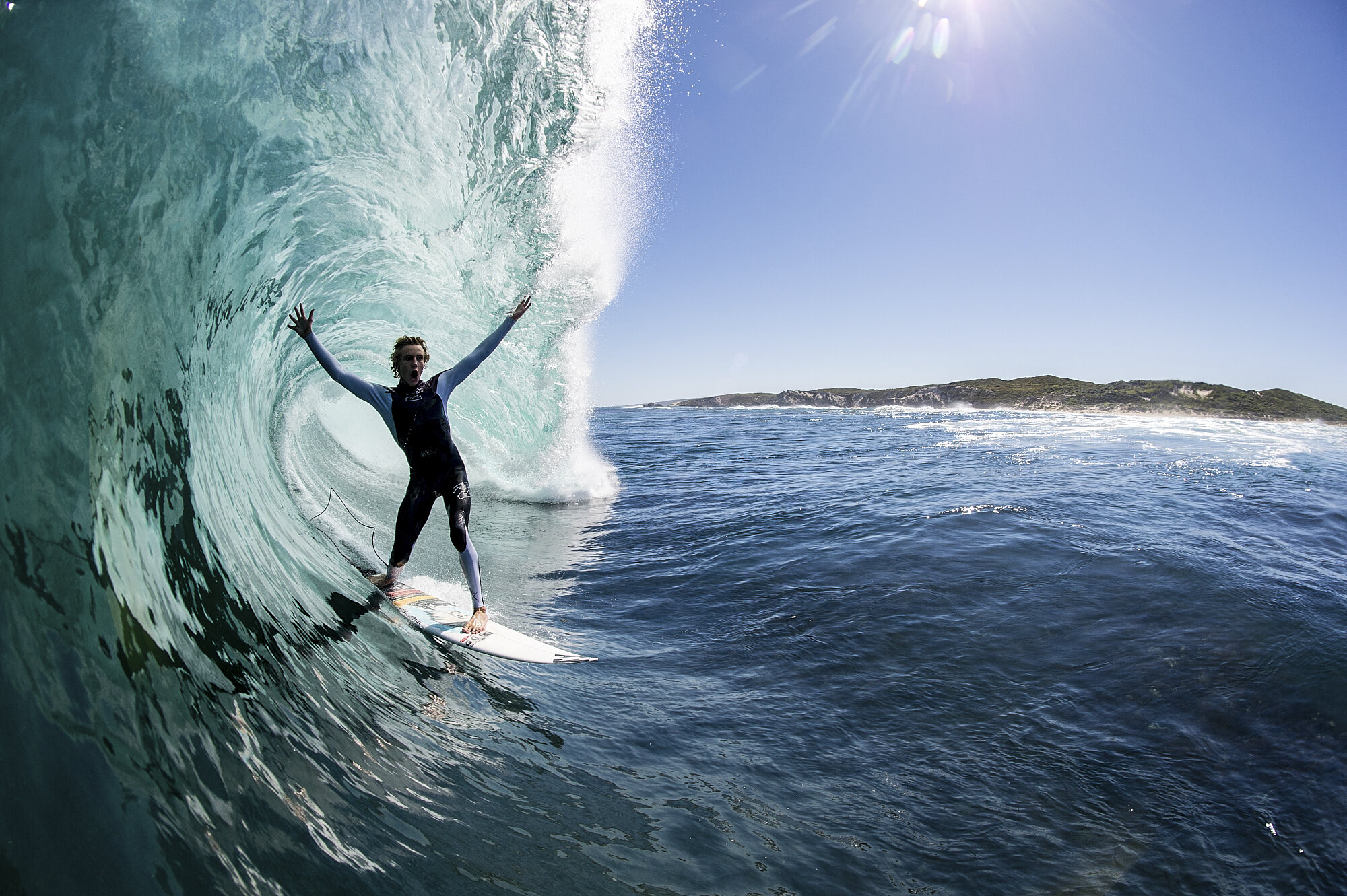
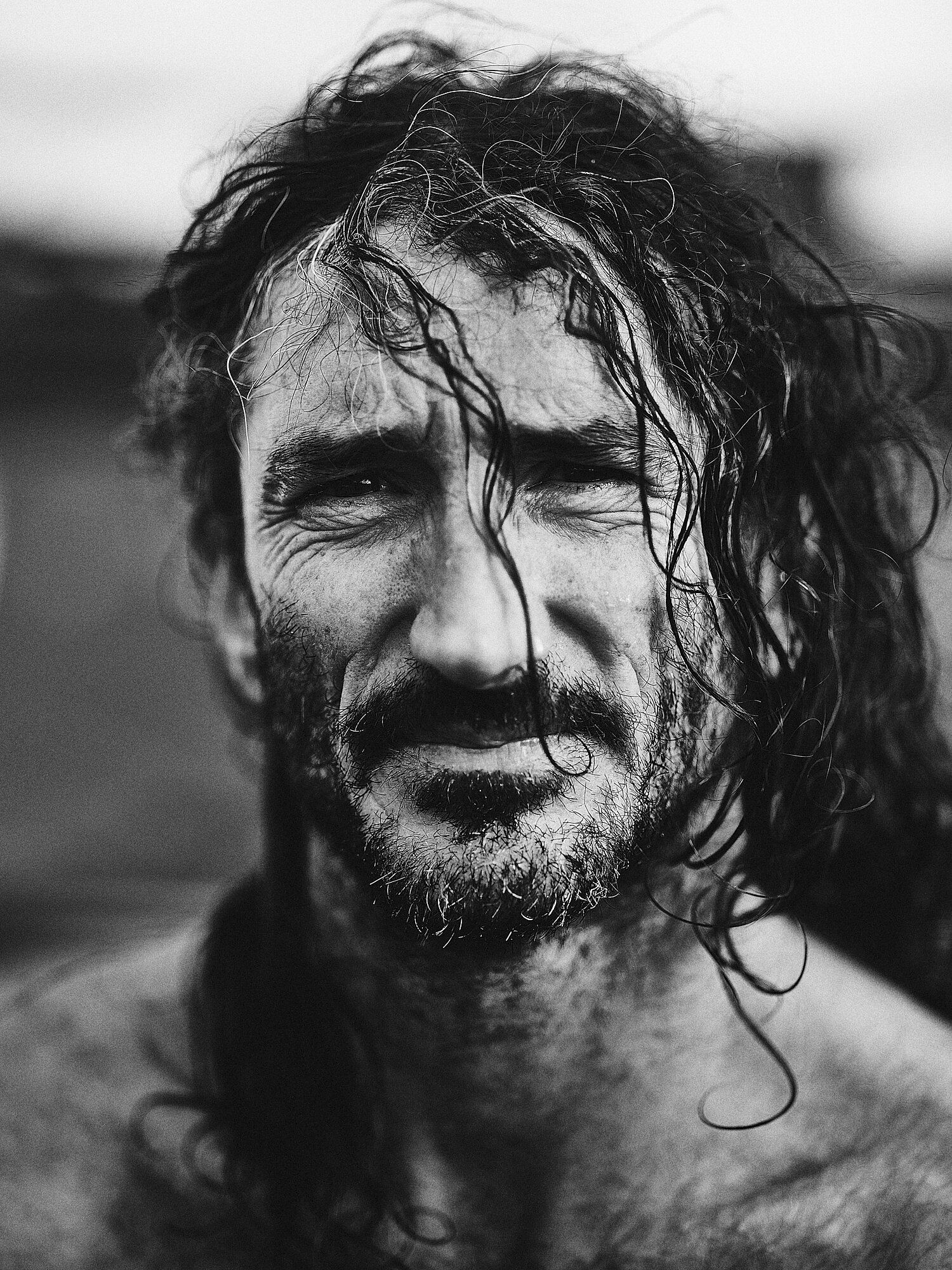
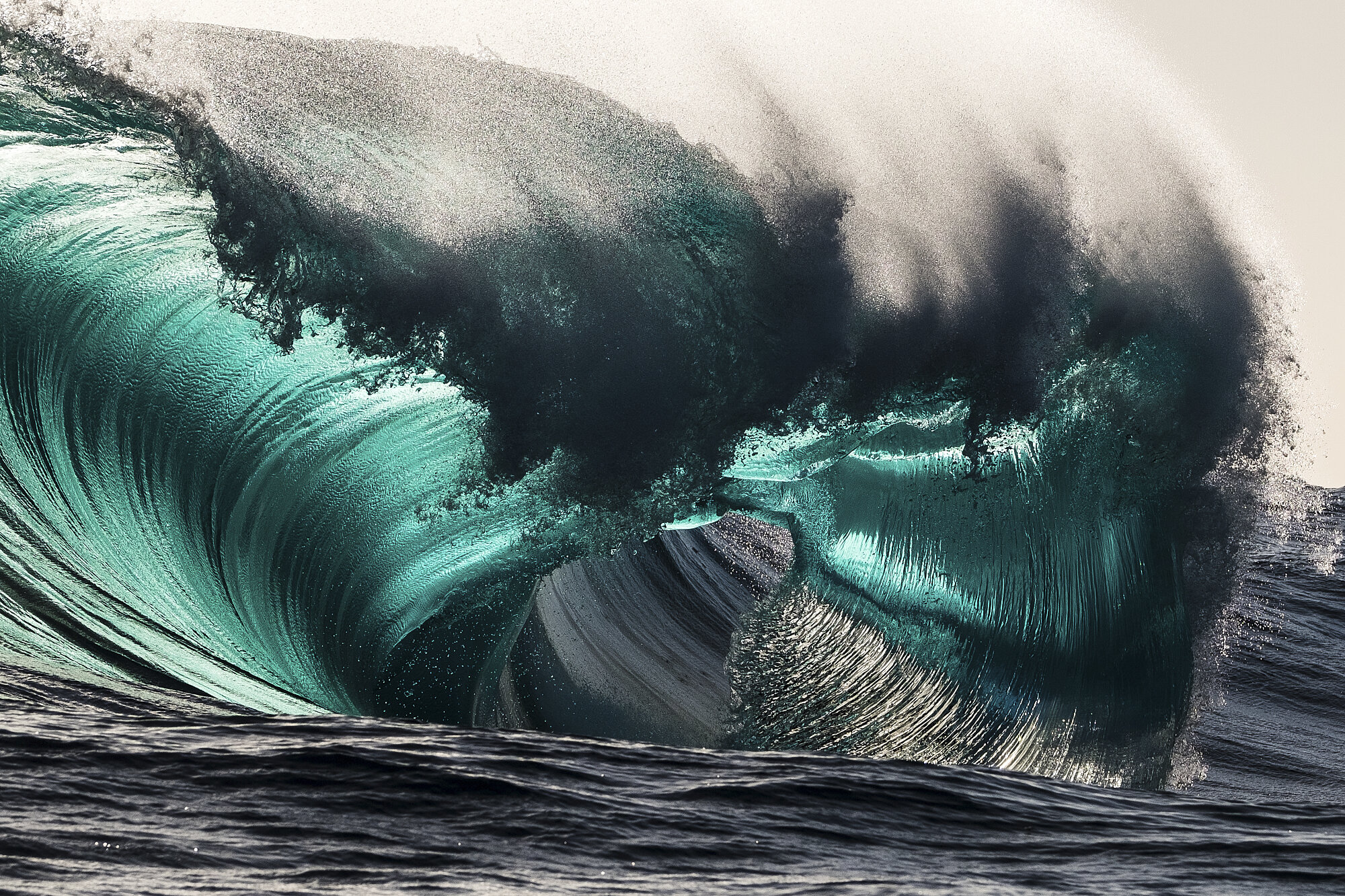
A move south to Margaret River allowed his surf photography to flourish, with an obsessive commitment to putting time in the water and training to withstand the most extreme conditions. While some surf photographers are content to stand on the beach with dozens of others, capturing near-identical images of pro surfers, Russ’s instincts took him to remote solo sessions, whether there was a big-name surfer to shoot or not.
“You could swim out in the dark and shoot empties, it’s a pretty good feeling,” he says. But that passion and idealism is balanced by a ruthless self-criticism of his own work. “You could pick up any surf mag and compare your work and knew you had years to go,” he says, of his early efforts.
But when his sense of adventure took him to some of the outer reefs during major swells around Margaret River, and then when he came across a wild offshore reef called The Right on the far south coast of WA, he’d found the perfect photogrpahic challenge for his unique skillset. Ord’s images of the Right, the Box and the Margaret River Bombie, among other big wave reefs, shot from radical angles floating in the impact zone, set his work apart from the legions of land-based photographers or those perched safely on the back of jet-skis in the channel. Even Russ eventually succumbed to the ease and convenience of shooting from a ski until a fateful accident shifted his perceptions.
In 2012, he broke his leg during a hairy rock jump down south, and in his time out of the water came to something of an epiphany about his work.
“Sitting in the doctor’s surgery, I picked up a magazine with the best wildlife photos of the year, and the number one shot had been taken in a zoo. I was shocked. It’s got no story behind it,” he says. He realised a lot of his own work similarly lacked an exciting back story, and the effort and the sacrifice required to capture a truly compelling moment.
“I was just sitting on a ski shooting moments and I just realised most of my work was shit,” he says. “I went back to being in the water and pushing those boundaries because that’s what I enjoy and that became the journey for a while.”
His focus became capturing the perfect, timeless image of the Right, to defy the increasing crowds in the water and other photographers shooting from the safety of the channel. The only way to differentiate his images, he realised, was to swim deeper into the impact zone to position himself where no one else was prepared to follow. It is a journey vividly captured in the documentary One Shot, made by WA film maker Darren McCagh, which has won a slew of awards at film festivals around the world.
The shot Russ had been chasing at the Right finally comes together, swimming deep into the impact zone to connect with Mark Mathews
“I still love the surf when I’m on my own, but I can’t shoot the same stuff as five other people, I’d rather surf,” Russ says.
Since leaving the fire brigade in 2014, Russ has earned an international reputation for his stunning ocean images, but the financial realities as a freelance creative supporting a family have proven challenging. “I let myself get stale in the fire brigade. I’d had enough,” he says. “There were a few incidents when you find out that life’s quite short, a blend of a few car accidents, which was a bit of a life lesson,” he says.
But that commitment to pursuing his passion had to be balanced with providing for a young family in a notoriously fickle vocation. “It’s a whole different thing when you rely on your photography. It’s pretty tough. It’s still tough at times now. When’s the next job coming in? I nearly took up a rescue job last year in the mines. But we’ve done well, we’ve diversified pretty well. You have to be adaptable and see opportunities somewhere else.”
Salvation came from an unexpected source, when Russ’s wife Kath walked into a Coastline surf shop during an extended stay in NZ, his wife’s homeland. Russ and Coastline boss Sean Kennedy immediately hit it off and Russ came onboard as inhouse photographer for the brand, working with their team riders on creating fresh content.
“I met Sean when I was in NZ and he was like a saviour. And it’s work I love doing,” Russ says. His son Kalani has even become a Coastline team rider and regular subject for his photo shoots.
As Russ’s work has evolved, he has become more interested in telling a story rather than just providing eye candy for the surf media. “You look at old work and you go, that was terrible. I get emotional and inspired by people’s stories,” he says.
To that end, he’s been working on a “local series” of portraits of Margaret River surfers and a book on the famous wave at Main Break and the people who ride it. “There are so many amazing people out there. Everyone’s got a story. The photos are just a by-product for me.”
And he continues to explore new avenues for his work. He’s setting up a new studio, gallery and café space in a converted old shed in nearby Cowaramup, along with developing a new website. He’s been working with a mate who takes music programs into schools, documenting the experience and has plans to run similar photography workshops with schoolkids. And he’s been giving talks to business and corporate groups about the passion that drives him, as well as his own experiences maintaining physical and mental health.
“A mate took music programs into schools. If the kids go to school, they can play music,” he says. “I’ve documented that a couple of times. The kids get the cameras, and they love taking shots. I’m trying to tap into that. If someone’s struggling, you can take them out shooting. You see how someone else sees the world. I think it would be so rewarding, I’ve seen the kids when they get the cameras.”
He’s given talks to everyone from business people to mine workers and his story and images always captivate audiences. “We’re doing a talk and we’re hanging around and they’re coming up and reaching out and I haven’t had a buzz like that for a long time.”
Right now, he’s rehabilitating a shoulder injury, courtesy of a late drop at Margarets, then aggravated when he tried to get back in the water too soon at Jakes Point, Kalbarri. He’s maintaining fitness during the enforced time out of the water with sandhill running, breath hold training and ice baths, to ensure he’s in good nick to get back out in the ocean as soon as possible.
“I just want to be fit to go surfing when I do go back,” he says. “The whole enjoyment of surf photography is getting in the surf, that’s the best part of it. The photo’s just a moment, that why I surf more than I shoot photos.”


